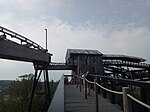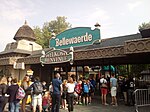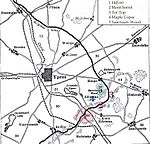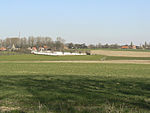Vampire dugout
Battle of PasschendaeleBritish Empire in World War IBuildings and structures in West FlandersRoyal EngineersWorld War I sites in Belgium ... and 2 more
YpresZonnebeke
The Vampire dugout (known locally in Belgium as the Vampyr dugout), is a First World War underground shelter located near the Belgian village of Zonnebeke. It was created as a British brigade headquarters in early 1918 by the 171st Tunnelling Company of the Royal Engineers after the Third Battle of Ypres/Battle of Passchendaele. Rediscovered in 2007, the Vampire dugout was the subject of a 2008 British television programme (Time Team) which was also broadcast abroad. The structure is inaccessible to the public, but inspected regularly by battlefield historians.
Excerpt from the Wikipedia article Vampire dugout (License: CC BY-SA 3.0, Authors).Vampire dugout
Ieperstraat,
Geographical coordinates (GPS) Address Nearby Places Show on map
Geographical coordinates (GPS)
| Latitude | Longitude |
|---|---|
| N 50.870799 ° | E 2.960371 ° |
Address
Ieperstraat
Ieperstraat
8980
West Flanders, Belgium
Open on Google Maps










